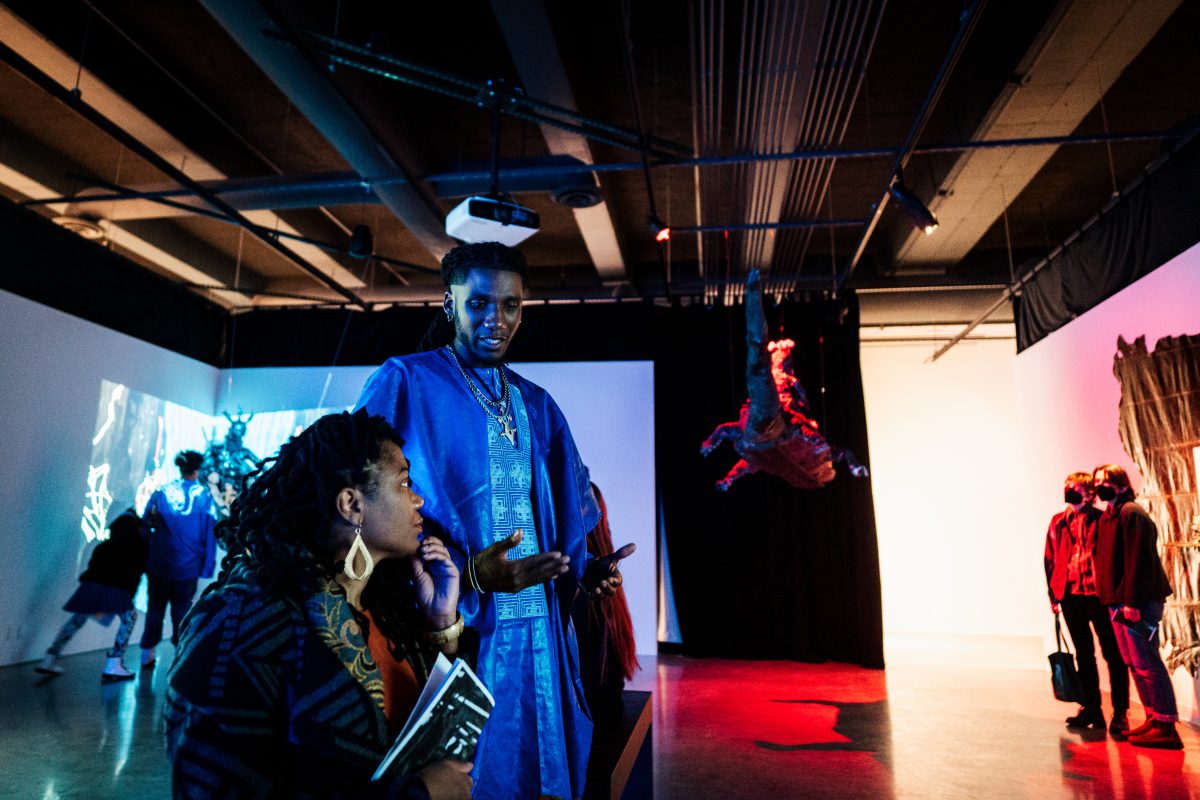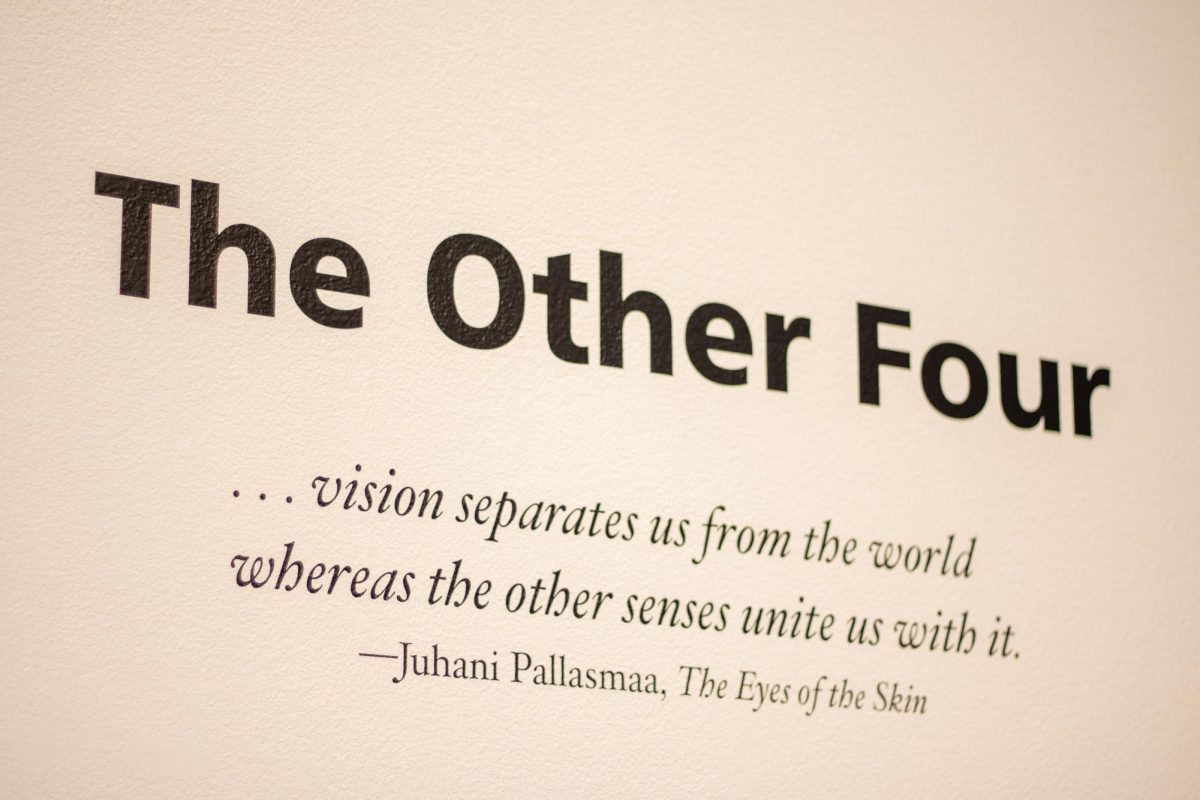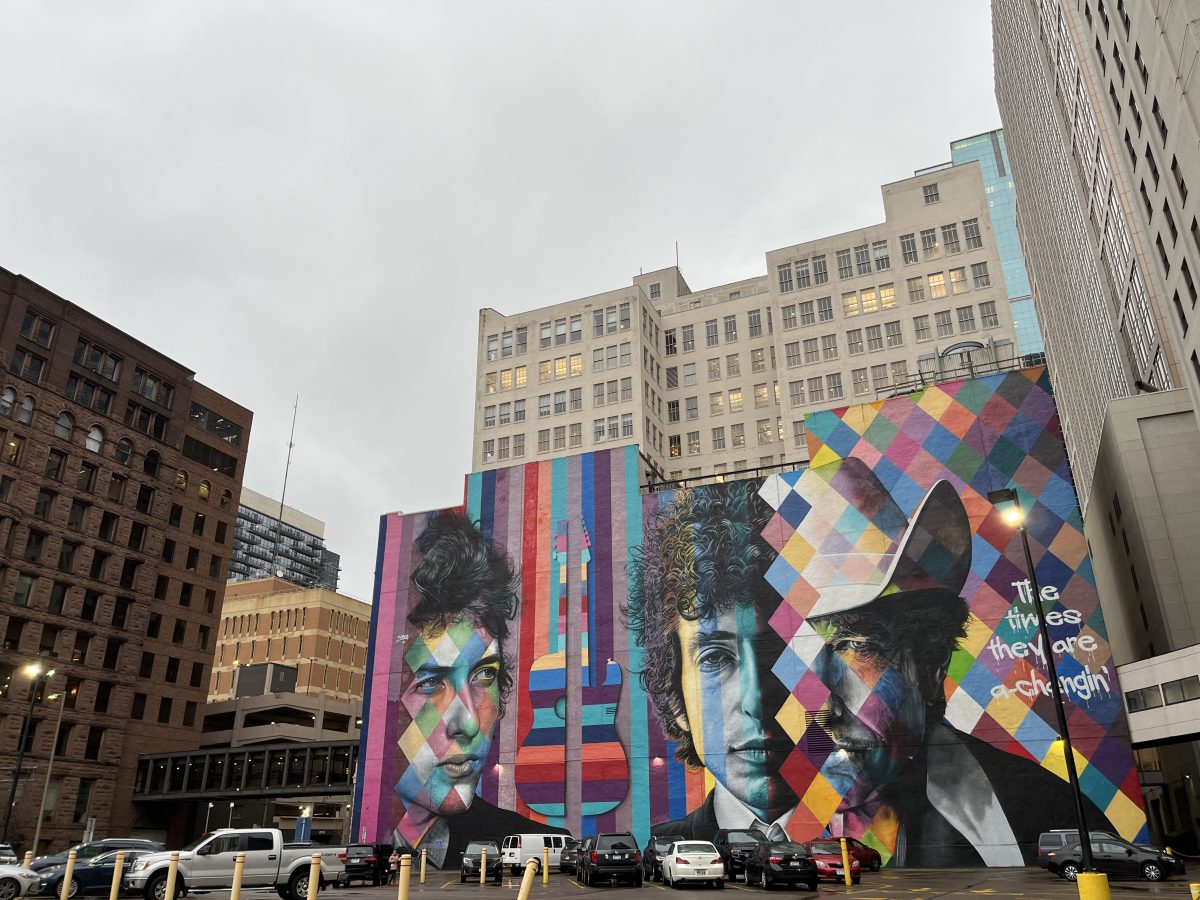Predicting the future is tough stuff. And predicting the future of black culture is even harder.
“Afrofuturism,” the newest installation at the Soap Factory, looks ahead while touching on the now and then.
The exhibition – and the Afrofuturism movement itself – explores the effect technology has and will have on the black community.
“The topic is very current, both in academia and within a wider culture,” said Ben Heywood, executive director of the Soap Factory.
A Yale professor held a discussion during the opening weekend, and the Soap Factory has ongoing film showings and public discussions throughout the run of “Afrofuturism.”
In fields like science fiction writing and music, technology is rapidly changing black culture.
The exhibit contains mixed media images, videos, paintings and prints. It uses computer monitors, laser prints and televisions.
But it is not a high-tech exhibit. Rather, it hints at the technology to come.
In conjunction with Obsidian Arts, a gallery that promotes the work of artists of African descent, the exhibition features the work of 28 artists.
Futurism is evident in Logik One’s “Brotha From Another Planet.” An astronaut in a bright purple and yellow spacesuit stands on a barren spot of ground. UFOs hover in the background, and the colors in the sky make the northern lights look like a kindergarten painting. The vibrant colors create an uneasy brightness that suggests a simulated planet, one that we know nothing about.
Another concept is the reuse of technology, and an example of “Afrofuturism” is in the iPods and CD cases of University students. Music techniques such as spinning arose from black musicians adapting technology for another use.
While music itself is not a primary aspect of the exhibit, Jonathan Russell’s “Waveless” uses four radios to project civil rights speeches. It’s disturbing to hear the voices call for equality and realize that some things have not changed, to think that the speeches could have been recorded one decade ago instead of four.
An interesting dichotomy arises when comparing the work of African artists with the work of African-American artists, Heywood said.
“Traditional African art looks at the future in a shamanistic way, while African-American art looks primarily at the past,” he said.
“Self-determination,” a mixed media/digital, print/video project by Colette Gaiter and Alex Smith, looks at the stratification between blacks and whites through images from the past and the present. Political stickers and neon-colored graffiti overlap clippings torn from 1960s Black Panther magazines. “The future is now!” is scrawled, graffiti-style, across a corner.
The historical feel of “Self-determination” is interrupted by newspaper headlines about the treatment of survivors of Hurricane Katrina and the World Trade Center attacks.
While “Afrofuturism” gives a sense of the future as a mixture of time, technology and culture, it also serves as a springboard for thought and a provocateur of change.
















